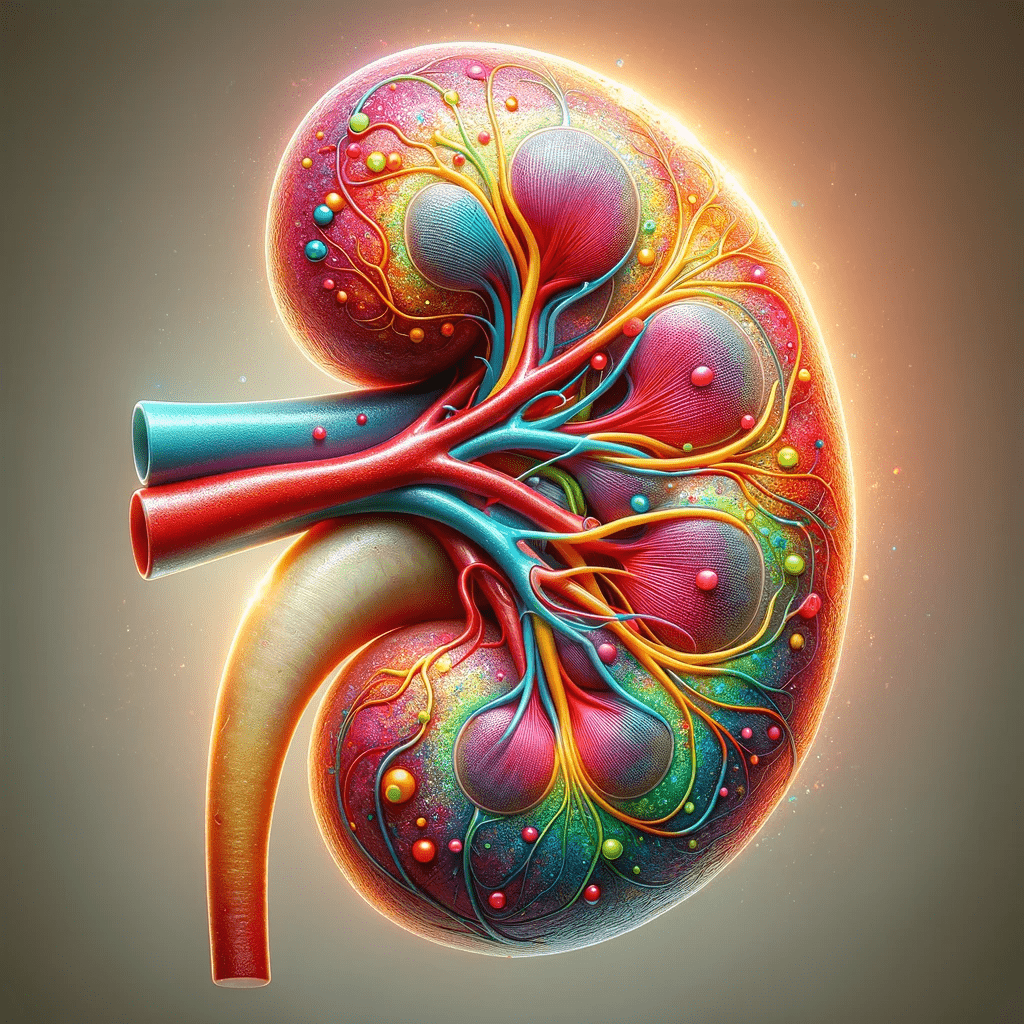
Lymphatic system (aka the ‘‘immune system‘) – organs, tissues, and vessels work as a team to transport lymph (excreted fluid from cells or tissues in the body) back into the bloodstream.
This immune “system” of organs remembers every microbe it has ever fought and defeated.[1] It works in unison to prevent pathogens from invading the body.
Lymph fluid plays an extremely important role in the immune system and evolves over the course of a lifetime. The current body of research suggests that hydration is essential for overall health and can support various bodily functions, including the immune system and definitely cognitive functions including memory, attention, and concentration[10]. However, more targeted research is needed to fully understand the direct impact of hydration on adaptive immunity. The role of hydration in the immune system, particularly its impact on adaptive immunity, remains an area that could benefit from further exploration and research.
The immune system is separated into two parts: Innate (genetic, including phagocytes (macrophages and neutrophils), dendritic cells, mast cells, basophils, eosinophils, natural killer (NK) cells and innate lymphoid cells) and Adaptive (characterized by specificity, immunological memory, and self/nonself recognition). T cells and B cells are the two major components of adaptive immunity[2].
Lymph is a clear fluid that contains a high concentration of white blood cells and plays an important role in the immune response. Lymph nodes and organs filter and transmit nutrients, lymph fluid, and waste between the body’s tissues and the bloodstream. Humans have over 4 million exocrine sweat glands and all of them are involved in immune function.
Sweating and the Lymph System
Perspiration[3] is the process of sweating and comes from the Latin word spirae which means to inspire, exhale, blow, breeze, breathe, or emanate. “Physiologists have long regarded sweating as an effective and safe means of detoxification, and heavy metals are excreted through sweat to reduce the levels of such metals in the body.”[6] Heavy metals are excreted through dynamic exercise moreso than simple exposure to a heated environment (saunas, steam rooms, etc). Certain heavy metals are excreted far more effectively through sweating such as Nickel (ni), Lead (pb), and Chromium (cr).[6] Mercury and arsenic can also be added to the list. There is a specifically higher rate of toxicity release through sweat during extreme forms of exercise. One can imagine that a heated yoga room can be extremely effective for the waste removal of heavy metals.
The Organs of the Lymphatic System

However, this sweating hypothesis doesn’t portray a complete picture of the excretion of toxins from the body because there are several very specific organs that are also involved in this process which include:
Primary Organs of the Immune/Lymphatic System:

- Bone marrow: The soft, spongy tissue found in bone cavities. Bone marrow produces all the cells of the human body, including lymph and blood cells and are primary immunological organs.
- Lymph nodes: Small organs shaped like beans, which are located all over the body and connect via the lymphatic vessels. This is where Killer T cells mature and differentiate.
- Kidney’s: play an underappreciated role in the immune system. While it’s primarily known for its functions in filtering blood, removing waste products, and regulating electrolytes, the kidney also has several key roles in immunity including: barrier function, Innate Immunity, Adaptive Immunity, Cytokine Production, Interplay with Systemic Immune Responses, and Resistance to Infection and Autoimmune Diseases.
- Lymphatic vessels: A network of channels all over the body that carries lymphocytes to the lymphoid organs and bloodstream. They play a key role in maintaining fluid balance in the body and in immune surveillance
- Thymus : Two lobes that join in front of the windpipe (trachea) behind the breastbone. The primary role of the thymus is in the development of T-lymphocytes (T cells), which are a type of white blood cell crucial for the adaptive immune system. These T cells are responsible for fighting off pathogens and are central to the body’s immune response.
- Adenoids : Two glands located at the back of the nasal passage. Infection of the adenoids is called adenoiditis. This can cause symptoms like a sore throat, stuffy nose, swollen neck glands, difficulty swallowing, and breathing problems. Adenoids are more prominent in children. They begin to grow from birth and reach their maximum size between the ages of 3 and 5 years. After this, they usually start to shrink and may nearly disappear by adolescence. Adenoids are part of the Waldeyer’s ring, which includes the tonsils and other lymphatic tissue in the throat and nasal cavity. They help detect and fight off pathogens that enter the body through the nose or mouth.
- Spleen: A fist-sized organ located in the belly (abdominal) cavity. One of the spleen’s primary functions is to filter blood. It removes old and damaged red blood cells from the bloodstream. This process is crucial for maintaining healthy blood cells in circulation. The spleen is an integral part of the immune system. It produces lymphocytes, which are white blood cells that fight infection. The spleen also helps identify and destroy bacteria and other pathogens in the blood. When the spleen breaks down red blood cells, it recycles the iron contained within them. This iron is then used to make new blood cells.
- Peyer patches: Lymphoid tissue in the small intestine. These patches are rich in B and T lymphocytes. B cells within Peyer’s patches can differentiate into plasma cells that produce immunoglobulins (antibodies), particularly IgA, which is crucial for immune functions in the gut.
- Tonsils: Two ovular masses in the back of the throat. Tonsils are part of the body’s lymphatic system and contribute to the immune defense. They act as a first line of defense against pathogens that enter the body through the mouth or nose. Tonsils contain immune cells that help fight infection. This is most likely WHY breathing through the nose can be so beneficial and stimulating for the immune system.
- Skin: Often overlooked as part of the immune system, the skin acts as a physical barrier to prevent the entry of pathogens. It also contains specialized cells of the immune system, such as Langerhans cells, which help to detect and fight infections.
- Liver: The liver contributes to immune defense by producing acute-phase proteins that increase in response to inflammation and by removing pathogens and toxins from the blood. The liver plays a crucial yet often underappreciated role in the immune system. It’s known primarily for its functions in metabolism, detoxification, and nutrient storage, but its immune-related roles are equally significant. The liver has a unique role in promoting immune tolerance, particularly to food antigens and gut microbial antigens. The liver contains Kupffer cells that are a type of macrophage, which means they can engulf and destroy bacteria, damaged cells, and other potentially harmful substances. Kupffer cells play a vital role in removing debris and pathogens from the blood. In summary, the liver’s role in the immune system is multifaceted. It acts as a sentinel for pathogens, produces vital immune proteins, helps regulate immune responses, and plays a unique role in promoting tolerance to food and gut microbes. This underscores the liver’s importance not just in metabolism and detoxification, but also as a key player in the body’s defense mechanisms.

References:
- John Hopkins – The immune System
- Science Direct – Adaptive Immunity
- BioDigital – Lymphatic System
- Wikipedia – Spirae
- Biology Corner Anatomy
- BJD – Sweat Glands
- Taylor Francis Online – Physiology of sweat gland function: The roles of sweating and sweat composition in human health
- Pub Med – Excretion of Ni, Pb, Cu, As, and Hg in Sweat under Two Sweating Conditions
- Science Direct – Sweat and the Skin
- PLOS – The impact of water consumption on hydration and cognition among school children
- Science Direct – Waldeyer’s Ring
- Chat GPT – research
- DALL-E (OpenAI’s Image Generation Model)
- Artiphoria.ai – Image creation

